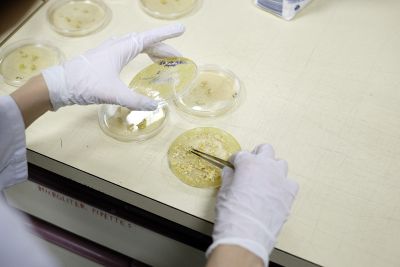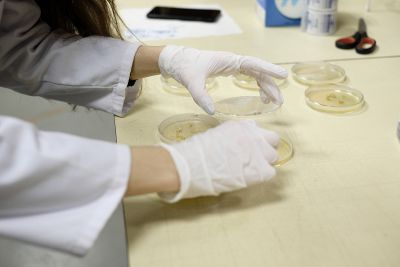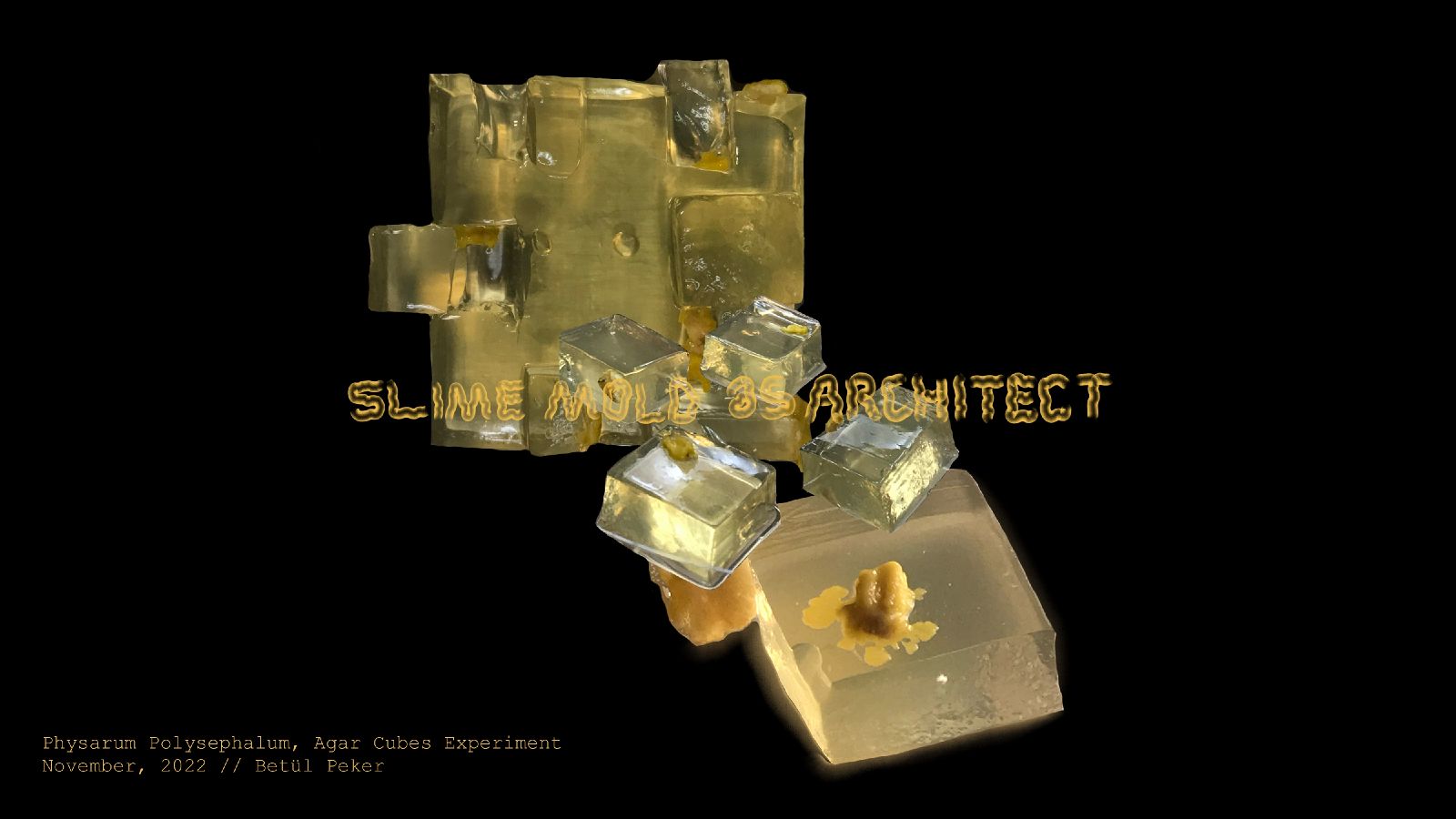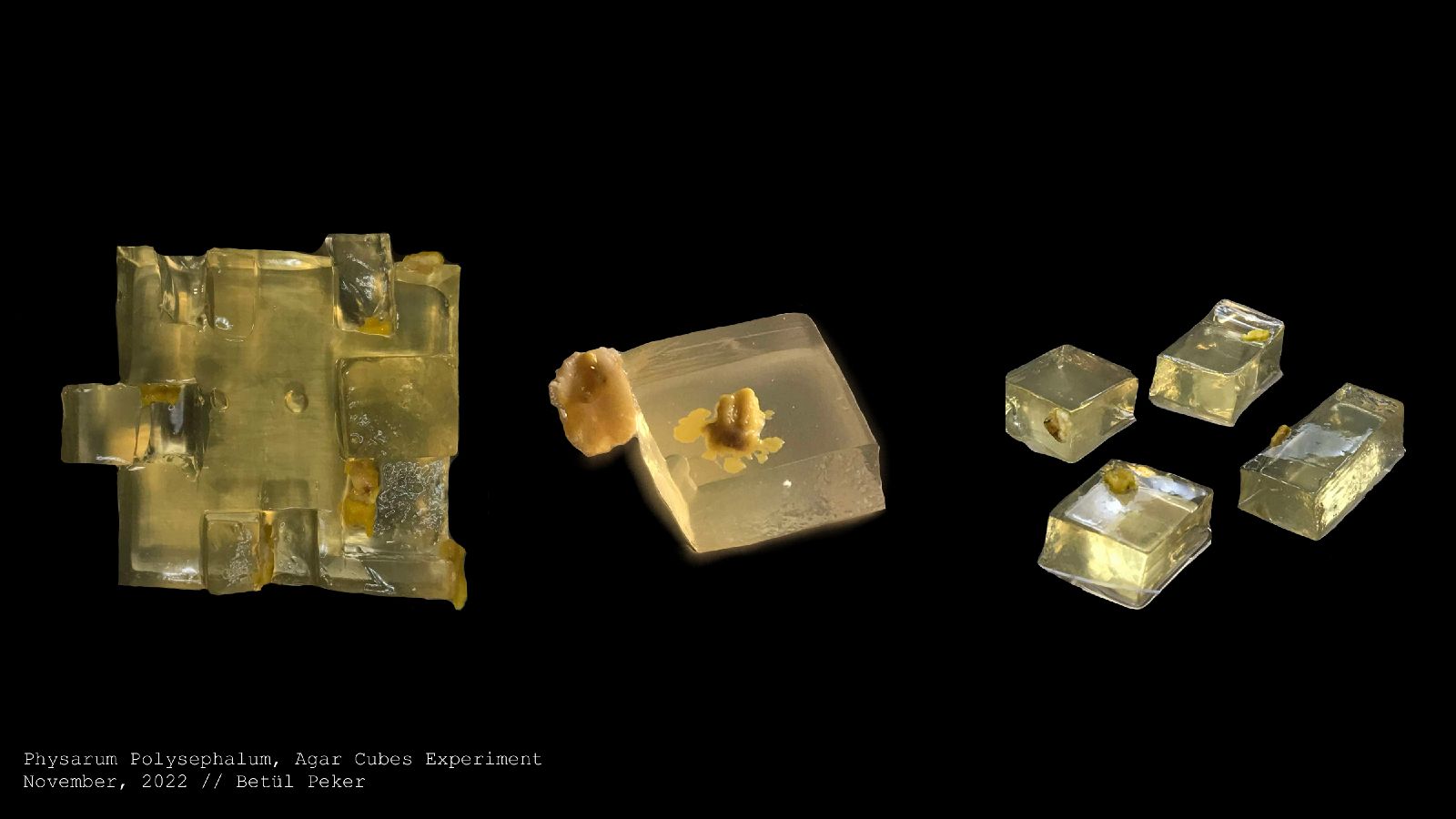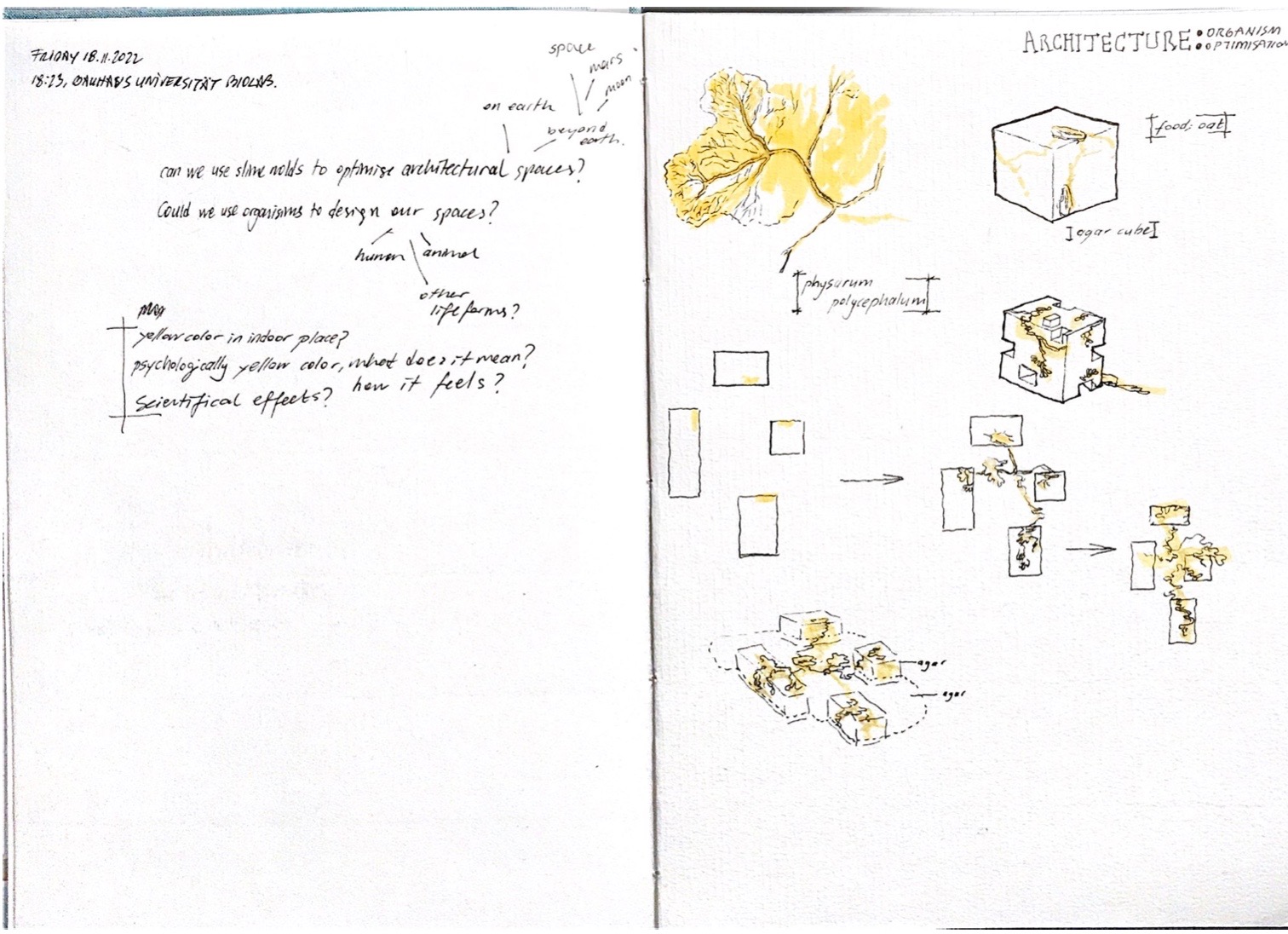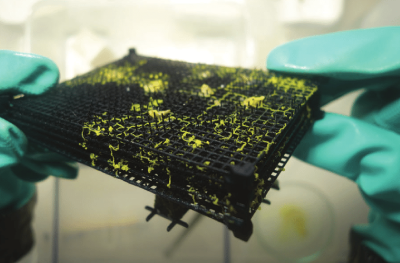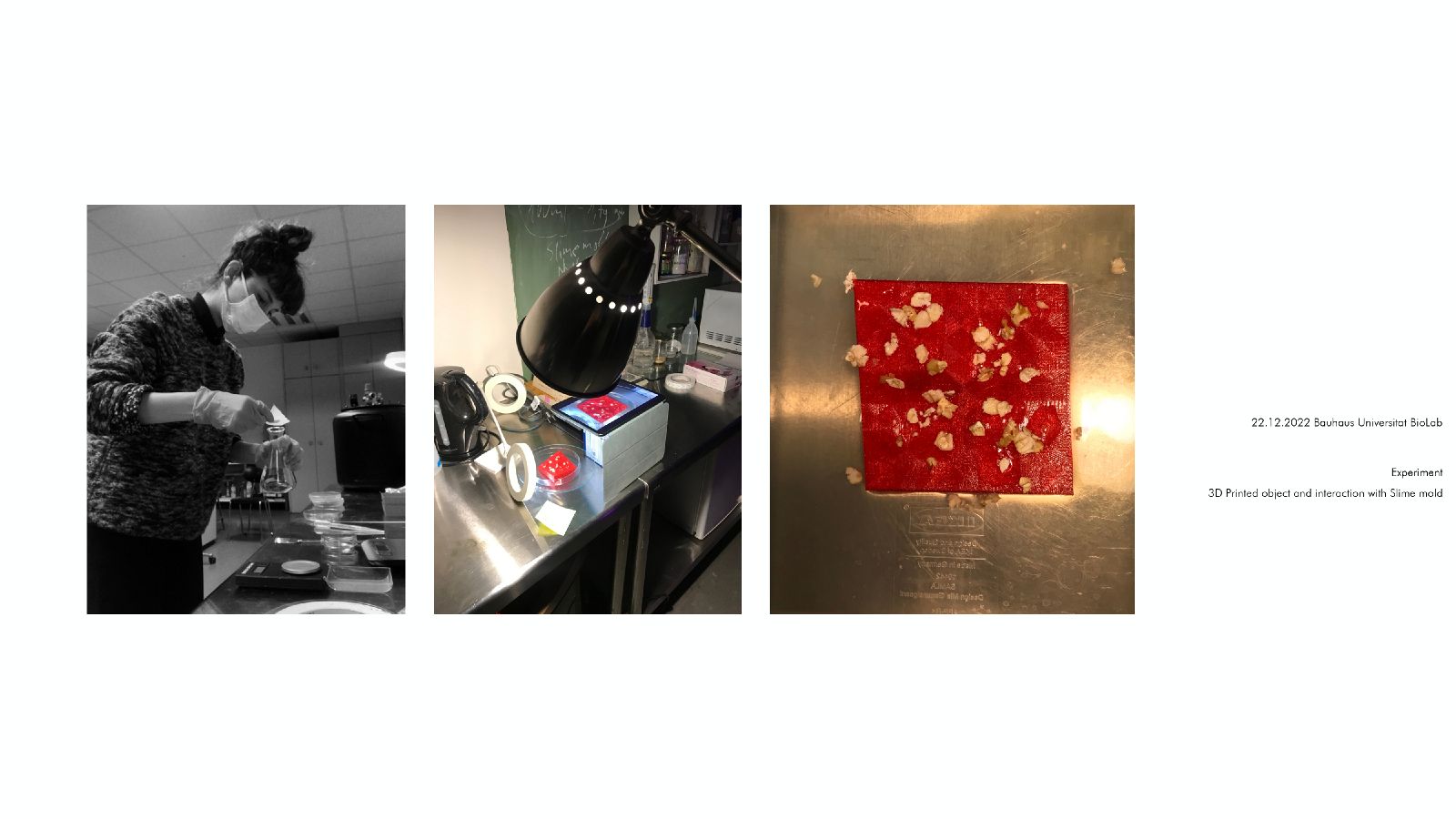Betulpeker (talk | contribs) |
No edit summary |
||
| (27 intermediate revisions by 2 users not shown) | |||
| Line 1: | Line 1: | ||
* | == +Slime Mold as an Architect == | ||
*Sustainable Aesthetics // 2022 WiSe Project | |||
*Mediator: Architecture, drawing practice | |||
*Agency: Physarum polycephalum | |||
*Experiments:#petridish #PhysarumPolycephalum #joulthief | |||
The project aims to examine the behaviour of physarum polycephalum and utilise its conscious and continuous movement. | |||
In the project, firstly, cube and rectangle forms which are made by agar used to observe how slime mold reacts to different shapes. | |||
The main idea of the project is to take physarum polycephalum as a possibility to create an experimental architectural structure. The project also speculatively aimed to give space to physarum polycephalum to live in, just like how humans live in dwellings. | |||
As known physarum polycephalum cells prefer to live on upright structures, like tree branches and plants, also they tend to grow upward until the food source is reached. They leave behind a trail of dead cells as they travel. As they grow, they could become bigger and bigger. | |||
When we consider the history of architecture, architecture is human-centric and gives an answer to human needs. | |||
' | Architecture's relationship with nature | ||
Human being has a tendency to welcome "attractive" parts of nature in their life in indoor and outdoor spaces. They do this by creating solutions for building a relationship between nature and human-made structures. But what if we think about giving a place for living organisms to maintain their life and use architecture as a tool for them? This project speculatively approaches "architectural solutions" for physarum polycephalum and considers them as a "resident". | |||
[[File:_DSF1197.JPG|400px]] | |||
[[File:_DSF1195.JPG|400px]] | |||
[[File:slimemold_betulpeker.jpg|1600px]] | |||
1 | [[File:smold(1).jpg|1600px]] | ||
[[File:sketch-slimemold.jpeg|1600px]] | |||
[[File: | Reference; | ||
[[File:Screenshot 2023-02-07 at 16.57.43.png|400px]] | |||
[[File: | ==Experiments== | ||
*[[:File:timelapse-1-.mp4]] | |||
3D Printer Experiement (with 7x7cm tile, test for the 3d printed model) | 3D Printer Experiement (with 7x7cm tile, test for the 3d printed model) | ||
| Line 51: | Line 51: | ||
As a possibility, the slime mold's movement may be used to create an experimental 2D architectural drawing and this drawing may become the base of the 3D printed structure. In this case, until a relatively certain point, slime mold gives a decision about how the plan and 3D printed piece will look like. | |||
*[[Thoughts About Sustainable Aesthetics ]] | |||
*[[Growing Microbial Cellulose ]] | |||
==References== | |||
[https:// | *[[:File:werner_2019_.pdf]] | ||
*https://www.wired.com/2010/01/slime-mold-grows-network-just-like-tokyo-rail-system/ | |||
*https://www.theresaschubert.com/works/somniferous-observatory/ | |||
*https://www.designboom.com/design/living-screens-slime-mould-iaac-11-01-2017/ | |||
*https://www.takashikuribayashi.com/works?lightbox=image_2185 | |||
*https://www.ribaj.com/culture/reseaux-mondes-centre-pompidou-paris-ecologicstudio-slime-mould | |||
==Model References== | |||
*https://i.pinimg.com/736x/6f/f8/1d/6ff81ddc794ed0da257f880cb2e2a65f.jpg | |||
*https://www.creality.com/es/blog/the-basic-introductory-guide-of-resin-3d-printers | |||
Latest revision as of 14:46, 10 February 2023
+Slime Mold as an Architect
- Sustainable Aesthetics // 2022 WiSe Project
- Mediator: Architecture, drawing practice
- Agency: Physarum polycephalum
- Experiments:#petridish #PhysarumPolycephalum #joulthief
The project aims to examine the behaviour of physarum polycephalum and utilise its conscious and continuous movement.
In the project, firstly, cube and rectangle forms which are made by agar used to observe how slime mold reacts to different shapes.
The main idea of the project is to take physarum polycephalum as a possibility to create an experimental architectural structure. The project also speculatively aimed to give space to physarum polycephalum to live in, just like how humans live in dwellings. As known physarum polycephalum cells prefer to live on upright structures, like tree branches and plants, also they tend to grow upward until the food source is reached. They leave behind a trail of dead cells as they travel. As they grow, they could become bigger and bigger.
When we consider the history of architecture, architecture is human-centric and gives an answer to human needs.
Architecture's relationship with nature
Human being has a tendency to welcome "attractive" parts of nature in their life in indoor and outdoor spaces. They do this by creating solutions for building a relationship between nature and human-made structures. But what if we think about giving a place for living organisms to maintain their life and use architecture as a tool for them? This project speculatively approaches "architectural solutions" for physarum polycephalum and considers them as a "resident".
Experiments
3D Printer Experiement (with 7x7cm tile, test for the 3d printed model)
As a possibility, the slime mold's movement may be used to create an experimental 2D architectural drawing and this drawing may become the base of the 3D printed structure. In this case, until a relatively certain point, slime mold gives a decision about how the plan and 3D printed piece will look like.
References
- File:werner_2019_.pdf
- https://www.wired.com/2010/01/slime-mold-grows-network-just-like-tokyo-rail-system/
- https://www.theresaschubert.com/works/somniferous-observatory/
- https://www.designboom.com/design/living-screens-slime-mould-iaac-11-01-2017/
- https://www.takashikuribayashi.com/works?lightbox=image_2185
- https://www.ribaj.com/culture/reseaux-mondes-centre-pompidou-paris-ecologicstudio-slime-mould
